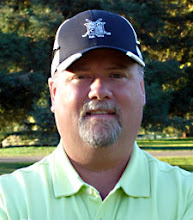It looks bad because it's working


Green bermuda in February
 It sure is great to see some green bermuda this early in the year. Back in September when I first reported the decision to suspend fairway overseeding, I shared with you my expectations for the fall, winter, and spring condition of the bermudagrass. One estimate was bermuda breaking dormancy in March and beginning to grow in April. Click on this link to read the entire post: www.sgccturf.blogspot.com/2009/09/no-overseed-for-2009.html
It sure is great to see some green bermuda this early in the year. Back in September when I first reported the decision to suspend fairway overseeding, I shared with you my expectations for the fall, winter, and spring condition of the bermudagrass. One estimate was bermuda breaking dormancy in March and beginning to grow in April. Click on this link to read the entire post: www.sgccturf.blogspot.com/2009/09/no-overseed-for-2009.htmlSometimes it's nice to be wrong, because bermuda growing in February is a beautiful sight to behold. This portion of fairway in the photo was little more than mud just one month ago. Two weeks later there were green tips of grass peeking out to enjoy the unseasonably warm temperatures. After many days above 60 degrees and nights well above freezing, the bermudagrass is actually growing.
The bright green clump of grass is poa annua which will be sprayed out when a few pages turn off the calendar. By then, the bermuda will be much stronger and dealing with weather it can handle without going back to sleep. I would expect to keep the green tinge the bermuda currently exhibits without returning to the dormant brown of the past three months. So, we're off and running........ or maybe walking........... slowly, towards the goal of a solid bermuda fairway.
Petco Park tour in San Diego

 This form of turf management is very different from golf course management. Luke told us that he spends 90% of his time on the infield soil. The ground needs to be a specific firmness for foot traffic so ruts are not created during base running. Bad hops in the infield is the quickest way to get complaints from players and managers, so the majority of time is spent making it perfect.
This form of turf management is very different from golf course management. Luke told us that he spends 90% of his time on the infield soil. The ground needs to be a specific firmness for foot traffic so ruts are not created during base running. Bad hops in the infield is the quickest way to get complaints from players and managers, so the majority of time is spent making it perfect. 
Golf Industry Show
Baling Hay
 Today we finished mowing fairways that haven't felt the cut of a blade for over two weeks. Luckily, soil temps are still pretty low and the growth never got out of hand. The fairway shown here is number 13 and Juan Valenzuela is carefully navigating the soft spots and stopping to clean the rollers every few passes.
Today we finished mowing fairways that haven't felt the cut of a blade for over two weeks. Luckily, soil temps are still pretty low and the growth never got out of hand. The fairway shown here is number 13 and Juan Valenzuela is carefully navigating the soft spots and stopping to clean the rollers every few passes.The fairways have improved year after year with sand topdressing and aerfication. The difference each year is small, but the cumulative effect is growing. This year we will aerify the fairways with solid tines as soon as they are dry enough to handle the equipment. In June we will pull cores and in September we will pull cores again and topdress.
In the future, I hope to start topdressing twice as much on fairways to work some sand and pore space into the soil profile. The difference each year would be small, but the cumulative effect............. Are you seeing a trend here?

